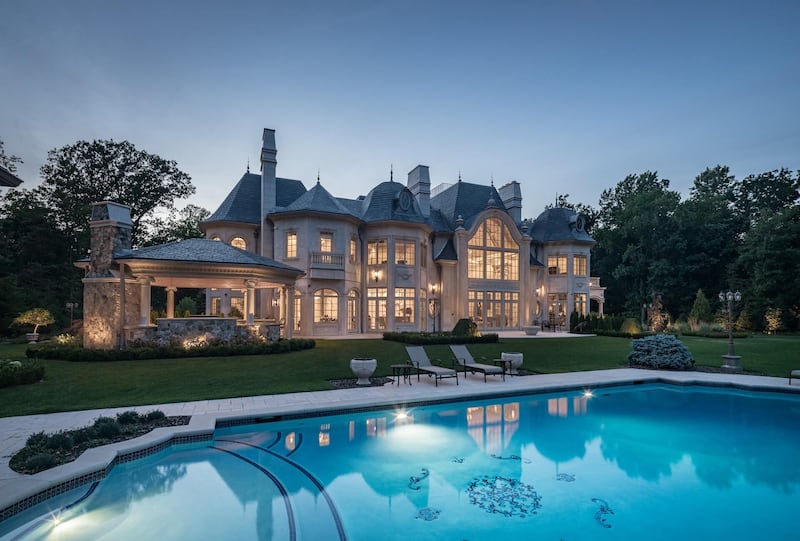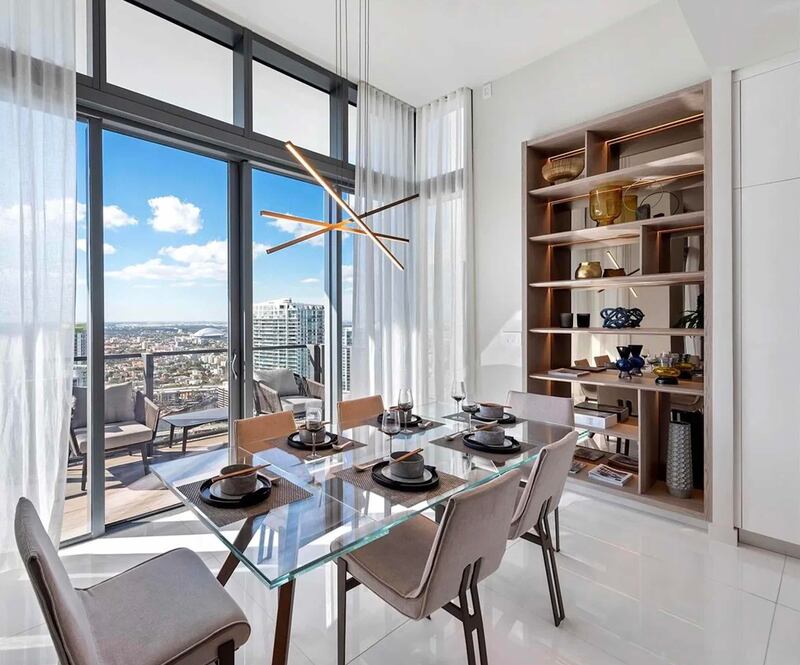Earth Day: Top 10 Eco-Friendly Home Trends
April 21, 2023
April 22 marks the 53rd anniversary of Earth Day. This year’s theme, “Invest in Our Planet,” resonates in today’s luxury real estate market.
Designers and builders have taken the cutting edge of new, “eco-friendly” technologies to create and renovate houses that embrace green architecture and green design.
They are building homes using locally sourced materials and the power of sunlight, wind, and geothermal energy. There is an array of technologies that help offset our carbon footprint, such as humidity-controlled indoor air, filtered drinking water, LED lighting, HEPA air filters, and “smart home” internet systems and controls.
Herewith, we spotlight 10 of the latest eco-friendly features and a sampling of innovatively built homes that offer the ultimate in luxury and sustainable living.
1. Green Roofs
 Opens in new window
Opens in new windowGreen roofs are aesthetically pleasing and environmentally friendly.
Using vegetation in place of conventional roofing materials also reduces air pollution and absorbs stormwater runoff. They also lower energy costs and even extend the life of the roof’s supporting structure.
The earliest “green roof” might have been the famous Hanging Gardens of Babylon, but it was not until the early 1970s in Germany that technology caught up with aesthetics and green roofs became a viable design option.
Today, green roofs are so practical and effective that mainstream, design-focused authorities like HGTV are offering primers on how to install your own. Luxury homes have incorporated green roofs and balconies for a mix of efficient, natural cooling and landscaped, aesthetic beauty.
2. Sustainable and Locally Sourced Materials
This eco-friendly practice is actually not at all new: Before international shipping became commonplace, “locally sourced” was simply the method all builders used.
They chose from stone, wood, thatch, or local clay, depending on which resources were abundant in a particular region. To reduce the carbon footprint of today’s construction practices, architects and contractors are seeking local solutions to new design challenges.
3. Biophilic Design
 Opens in new window
Opens in new windowBiophilic design is an approach that aims to connect the people who use a space with their environment.
It’s an extension of the term Biophilia, coined by psychoanalyst Eric Fromm and later popularized by American biologist, naturalist, and Pulitzer Prize-winning author Edward O. Wilson.
In his 1984 book, Biophilia, Wilson hypothesized that humans have an innate tendency to seek connections with nature and other forms of life. Proponents of biophilic design assert that applying it to the built environment enhances creativity and improves health and well-being.
4. Smart-Home Technology
 Opens in new window
Opens in new windowToday’s eco-friendly houses aren’t just sustainable, they’re smart. AMX, part of Samsung’s Harman Professional Division, designs and engineers the Internet of Things.
Crestron is another company at the forefront of home automation. Both AMX and Crestron smart-home systems control light, heat, ventilation, sound—even irrigation—at the touch of a button.
Ideal for homeowners who divide their time among several residences, each home-automation system can be programmed remotely so that energy is not wasted when the property is vacant.
Smart technology can also protect the home. There are many apps with remote, one-touch security notifications: surveillance cameras alerts, security timers, presence detectors, and live-stream audio-visual transmission.
5. LED Lighting
Electricity drastically transformed the nighttime look and feeling of interiors, replacing the soft flicker and glow of candlelight with the hard, bright, on-demand illumination of incandescent bulbs.
Lighting is undergoing a radical change once again, thanks to advances in LED technology. LED bulbs are vastly more energy efficient than the filament bulbs of the 20th century, which means the carbon footprint of a home can be greatly reduced without switching off the lights.
The Dutch multinational corporation Philips, founded in 1891 and a global leader in LED lighting, even produces LED-powered luminous textiles called Kvadrat Soft Cells that can add an atmospheric glow to any interior without the need for a single fixture.
And, of course, software, smart phones and their virtual thumbwheels can instantly change the intensity, temperature, color, and even the very moods of light—restoring the soft, romantic flicker and glow of ancient lamps and candles.
Related: Discover Ethical Living Trends in Cruelty-Free Fashion and Homeware
6. LEED Certification
 Opens in new window
Opens in new windowLEED certification has become a byword for eco-friendly construction practices.
LEED (Leadership in Energy and Environmental Design) is a global, green building certification program from the U.S. Green Building Council that evaluates the totality of a building’s design: its carbon footprint, energy and water use, waste, transport, materials, health, and indoor environmental quality.
The four-tier certification is the most widely used green building rating system in the world. According to the council, more than 430,000 homes around the world are LEED-certified.
The United States has the most LEED-certified homes. Green single-family homes represent approximately 40 percent of the market, and 84 percent of all residential construction will have sustainable features.
7. Solar Panels
 Opens in new window
Opens in new windowUsing the inexhaustible energy of the sun, rooftop solar panels provide a lightweight, long-term, cost-effective way to boost the passive energy of a home.
Solar panels are on-trend and can be an attractive and artistic addition, whether the home is new or centuries old.
Sweden’s SolTech Energy produces beautiful glass roof tiles that allow builders to create energy-efficient, solar-powered homes that draw design inspiration from a classic architectural style.
8. Geothermal Heating and Cooling
Like solar panels, geothermal heating and cooling harness the forces of nature to provide optimal indoor conditions at any time of year.
This technology lets homeowners keep the most luxurious home’s environmental footprint relatively small, even as its design makes a big aesthetic impact.
An efficient geothermal system can provide 20 years of reliable heating and cooling with minimal maintenance, so the benefits of installing one may outweigh the costs, especially if it’s for a new-build or to replace an old system.
9. New Habitats for Sea Life
One of the most exciting trends in eco-friendly building isn’t happening on land, but on the ocean, where innovative projects such as eco-friendly artificial islands are creating stable habitats for human beings and the sea life below.
Coral, fish, anemones, and all manner of microscopic creatures can carve out a home using the base of each island, as though it were a natural rock formation.
Smart ecological designs are applied on both land and sea, reducing the impact on marine life and even creating an underwater sanctuary for native species and “climate migrants,” aquatic animals on the move due to lost habitats.
10. Private Eco Preserves
And, finally, there is the eco preserve, where the owner is not so much landlord as steward of the earth and water, living in serene harmony with nature.
The concept of an eco-friendly lifestyle is evolving to include health and wellness. Add nature conservancy and outdoor recreation to the mix, and the solution may just be a home on a private preserve. Those in search of greener pastures will find the perfect balance: living mindfully within nature.
Related: Explore 7 Homes with Gardens, Greenhouses & Courtyards
These innovatively designed homes aren’t the only ones to explore. Discover more eco-friendly properties offered for sale, or read more eco-friendly themed content.


